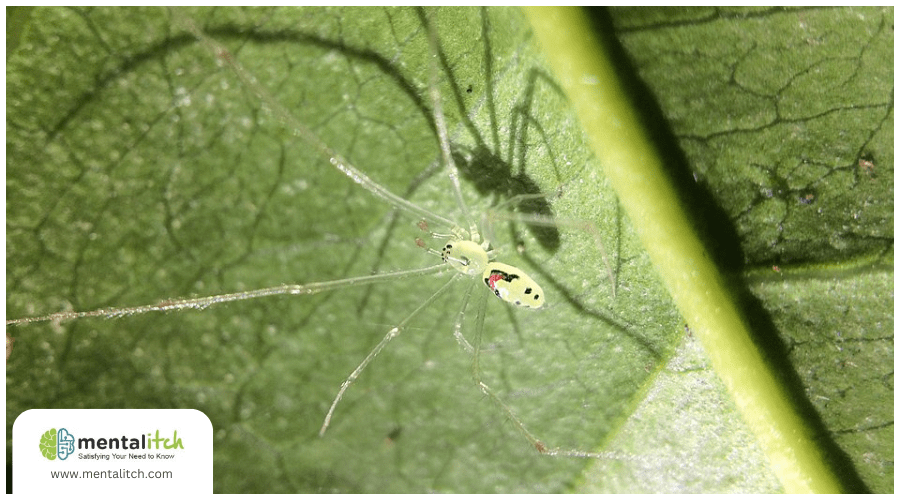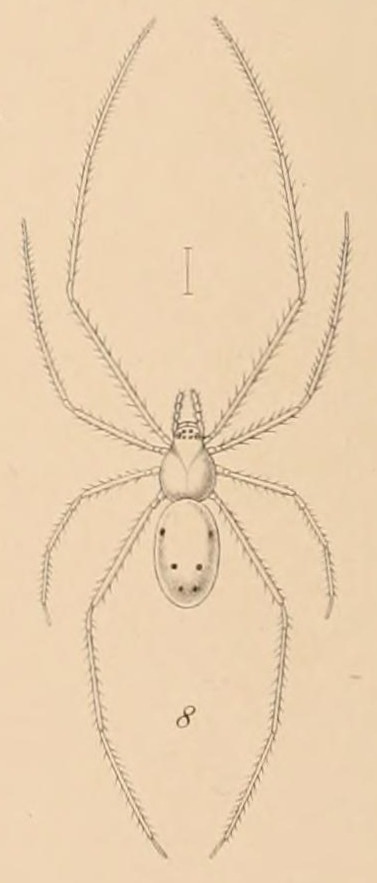As you walk through the dense foliage of Hawaii’s rainforests, you might stumble upon nature’s own version of a cheerful emoji—the Happy Face Spider. Named for its unique markings that resemble a smiley face, this tiny arachnid’s appearance isn’t just for show. These distinctive features play a vital role in its survival, possibly deterring predators with their human-like expressions. But how did such an unusual trait evolve, and what does it tell us about the natural world’s mysteries?
Unveiling the Name’s Origin
Named for its distinctive markings, the Happy Face Spider carries a smile that sets it apart in the arachnid world. This isn’t just any spider; it’s the Hawaiian happy face spider, renowned for its unique pattern that mirrors a smiley face. You might wonder why a spider would need such a cheerful emblem. Well, it’s believed that this smiley face acts as a predator deterrent. Imagine you’re a bird or larger insect hunting for your next meal and you come across a spider that seems to be smiling back at you. It’s disarming, isn’t it?
The evolutionary purpose behind this happy facade is still under investigation by researchers. They’re intrigued to uncover how such a pattern could have developed and what advantages it provides to the spider regarding survival. The happy face isn’t just a curious anomaly; it’s a key feature that helps to easily identify and differentiate this species within the dense catalog of arachnids. So, when you hear the name ‘Happy Face Spider,’ you’re immediately drawn to the unique and fascinating world of this Hawaiian arachnid, whose smile might just be its best defense.
Markings and Survival Strategies
Amid the dense foliage of the Hawaiian rainforest, the happy face spider employs its smiley face markings not just for charm, but as a clever survival strategy to deter predators. This small arachnid, native to the Hawaiian Islands, has evolved a distinctive pattern on its abdomen that resembles a human face. You might wonder how such a tiny creature can fend off larger predators. Well, it’s all in the smile—or, more accurately, the pattern that creates it.
The face-like markings serve multiple purposes. They might intimidate predators by investigating more dangerous species or by confusing them. Imagine you’re a bird or a larger insect in search of a meal, and you come across this small spider with a big, eerie smile staring back at you. It’s enough to give anyone pause, and that hesitation can be a lifesaver for the happy face spider.
While scientists continue to investigate into the specifics, it’s clear that this pattern is more than just a quirky trait. It’s a survival strategy, finely tuned by evolution, allowing this unique spider to thrive in the challenging environment of the Hawaiian rainforest.
Ecological Significance
Understanding the happy face spider’s unique markings reveals not only a survival tactic but also its significant role in the Hawaiian rainforest ecosystem. This spider, with its smiley face patterns, stands out not just for its whimsical appearance but for its ecological significance. The smiley face markings are more than just a curious feature; they’re a key to survival in a competitive environment.
Here’s how the happy face spider’s unique appearance contributes to the ecosystem:
- Mimicry or Warning: The spider’s distinctive smiley face markings act as a form of mimicry or warning, potentially confusing or intimidating predators. This suggests a sophisticated adaptation to its environment.
- Predator Deterrence: By deterring predators, the spider maintains its place in the ecosystem, contributing to the balance of predator-prey relationships within the Hawaiian rainforest.
- Unique Ecological Role: The spider’s survival, aided by its unique markings, indicates an intricate ecological web. Its presence and interactions, though not fully understood, are undoubtedly integral to the ecosystem’s health.
The happy face spider’s smiley face markings, hence, are not just for show. They serve critical functions in mimicry or warning, predator deterrence, and maintaining ecological balance, underscoring the spider’s importance in its natural habitat.
Behavioral Insights
Delving into the Happy Face Spider’s behavior reveals how its unique markings influence interactions within its habitat. You’ll find that the smiley face pattern isn’t just for show; it plays a critical role in the spider’s survival. This form of mimicry or warning is thought to deter predators, confusing or intimidating them enough to think twice before attacking. It’s a clever survival strategy that highlights the spider’s assurance to its environment.
The evolutionary purpose behind these distinctive markings remains a bit of a mystery, yet it’s clear they contribute to the spider’s survival and reproductive success. By potentially mimicking other, more dangerous creatures or sending a warning signal that’s understood by predators, the Happy Face Spider ensures its continued existence in the competitive world of Hawaiian rainforests.
This survival tactic, underscored by the intriguing smiley face pattern, not only adds to the fascination surrounding this species but also underscores the complex interplay between appearance, behavior, and survival. It’s a vivid example of how even the smallest creatures have evolved unique strategies to navigate the challenges of their environment.
Genetic and Evolutionary Factors
Exploring the genetic and evolutionary factors reveals how the Happy Face Spider’s smiley markings are more than just intriguing; they’re a survival tool shaped by nature’s hand. The unique patterns adorning their bodies are a result of genetic inheritance patterns that follow Mendelian laws. It’s fascinating to understand how these visual cues have evolved to protect them from predators lurking in the Hawaiian rainforests.
Here’s a brief look at the factors influencing the spider’s distinctive appearance:
- Genetic Inheritance Patterns: The smiley face markings are determined by genes and follow Mendelian inheritance, indicating a clear genetic basis for these patterns.
- Mimicry and Aposematism: These markings likely serve as a form of mimicry or aposematism, tricking predators into thinking the spider is either toxic or another less palatable species.
- Color Morphs and Predator Selection: Genetic studies reveal distinct genetic bases for different color morphs. Evolutionary pressures, such as predator selection, might have favored certain morphs, like the yellow variant, aiding their survival.
Understanding these genetic and evolutionary factors sheds light on the spider’s adaptation and resilience, showcasing nature’s complex interactions and the battle for survival in the wild.
Cultural and Scientific Impact
The Happy Face Spider’s smiley markings have not only sparked scientific curiosity but also left a lasting impression on cultures around the world. These distinctive patterns on its abdomen carry a deep cultural significance, endearing the spider to many and earning it its cheerful name. As you explore deeper into the spider’s world, you’ll find that scientists are equally fascinated. They’ve been studying these markings to unravel their evolutionary purpose, pondering whether they serve as a form of mimicry or a warning signal to predators lurking in the dense rainforest habitat.
This blend of mystery and allure has not only heightened the spider’s profile but also underscored the importance of preserving its environment. The Happy Face Spider has become a symbol of the joy and wonder that nature holds, encouraging a broader public interest in the biodiversity of our planet. Its unique appearance and the intrigue surrounding its evolutionary adaptations have bridged the gap between scientific research and cultural appreciation, showcasing how even the smallest creatures can have a profound impact on our understanding of the natural world.
Conclusion
So, you’ve probed deep into the world of the Happy Face Spider, learning why it’s named for those unique smiley markings. These aren’t just for show; they’re a clever survival trick, playing a pivotal role in the spider’s ecological niche. We’ve explored its behavior, the genetic wonders behind its evolution, and its impact both culturally and scientifically. It’s clear this tiny creature has a big story, reminding us of nature’s intricate designs and the importance of conserving such remarkable species.


